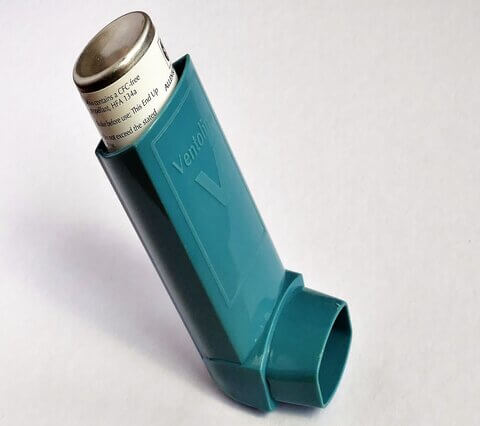Copyright © VSM Pharmacy Limited. All rights reserved. vsmpharmacy.co.uk is a trading name of VSM Pharmacy Limited. Registered office: 124 Frimley Road, Camberley, Surrey, United Kingdom, GU15 2QN. Registered in England: company number 12182298.


Did you know your inhalers effect the environment? While we’re all aware of the need to reduce gas emissions not many people realise that throwing their used inhalers in the bin isn’t a good thing.
As well as the general public, most corporations and businesses in the British Isles are taking steps to reduce their carbon footprint. The National Health Service is no exception.
The NHS has set two targets to help them become the world’s first net zero national health service.
The first is to reduce the emissions from the care they provide (the NHS Carbon Footprint) to net zero by 2040. The second is to reach net zero in 2045 by reducing the emissions across the entire scope of the NHS (the NHS Carbon Footprint Plus).
To reach their targets the NHS need the support of both patients and more than 1.3 million staff, to help reduce the NHS carbon footprint in the years running up to 2040 and 2045.
According to the NHS, 25% of emissions come from medicines and inhalers makeup 3% of this figure.
Around 1 person in 5 has a history of COPD, asthma, or other respiratory conditions. GPs prescribe over 65 million inhalers every year.
The most commonly prescribed inhaler is a Pressurised Metered Dose Inhaler (pMIDis). There are two types of metered dose inhalers, the first is a Reliever Inhaler which works immediately to open your airway. It’s normally blue.
The other type of inhaler is the Preventer Inhaler which as the name suggests, prevents symptoms. It also controls any inflammation and swelling in your airways. These containers can contain steroids. You’ll find the inhalers are normally brown, grey or white.
pMIDis functions by using hydrofluorocarbon gases, better known as HFCs or F-gases.
When F-gases enter the atmosphere, it stays there for around 270 years. It’s the gas that makes up 96% of the climate change impact. The other 4% comes from the plastic and metal used to make up an inhaler.
If you’re using an inhaler to help you to breathe you might wonder how the gas gets into the atmosphere. The reason is simple. Most people, when they have finished using an inhaler throw it in the bin. When your bin is loaded into the bin lorry your inhaler and the gas canister is crushed. By the time the inhaler reaches the landfill site the gas (normally around 30%) is in the atmosphere.
850,000 tonnes of carbon emissions. For every inhaler that’s thrown away that’s around 13-33kg. According to the PSNC fact sheet, that’s equivalent to driving a car for between 45 and 115 miles.
Instead of throwing your used inhaler into the bin, take it back to your pharmacy instead. It’s likely that when you have a prescription for an inhaler your pharmacist will ask you to bring your used inhaler back.
Your pharmacy will dispose of used inhalers as medical waste. The greenhouse gases are destroyed with thermal treatment.
This treatment protects the atmosphere by disposing of your used inhalers safely. This doesn’t damage the environment.
If you want to find out more about how to leave your used inhalers at our pharmacy come and speak to a member of staff who will advise you.

Copyright © VSM Pharmacy Limited. All rights reserved. vsmpharmacy.co.uk is a trading name of VSM Pharmacy Limited. Registered office: 124 Frimley Road, Camberley, Surrey, United Kingdom, GU15 2QN. Registered in England: company number 12182298.

To provide the best experiences, we and our partners use technologies like cookies to store and/or access device information. Consenting to these technologies will allow us and our partners to process personal data such as browsing behavior or unique IDs on this site and show (non-) personalized ads. Not consenting or withdrawing consent, may adversely affect certain features and functions.
Click below to consent to the above or make granular choices. Your choices will be applied to this site only. You can change your settings at any time, including withdrawing your consent, by using the toggles on the Cookie Policy, or by clicking on the manage consent button at the bottom of the screen.